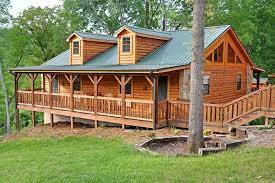
We have talked about this before, but one common mistake that some log homeowners will make is painting their log home. It may seem like a good idea at the time, but here are some reasons that it is not the best way to protect your home.
1. Logs Need to Breathe:
One of the fundamental issues with painting a log home is that it doesn’t allow the logs to breathe. It is natural for logs to expand and contract with changes in temperature and humidity. When you paint them, you create a barrier that doesn’t allow this natural process to occur. This can lead to the paint cracking and peeling, which can be a costly repair.
2. High Maintenance Requirements:
Painting a log home requires a significant amount of ongoing maintenance. The exterior of log homes is exposed to the elements, and over time, the logs will start to decay. When you paint your log home, you’ll need to regularly check for any signs of peeling or damage and address them promptly. This can be a time-consuming and costly endeavor, as log home maintenance often involves sanding, stripping, and repainting.
3. Aesthetic Appeal:
Painted log homes can lose some of their natural, rustic appeal. The texture and grain of the wood are hidden beneath the layers of paint, which can detract from the character that many log homeowners cherish. Staining, on the other hand, enhances the natural beauty of the wood and complements the surroundings.
4. Repairs:
If your painted log home sustains damage, repairing it can be a challenging task. Matching the paint color and texture can be tricky, and it’s often evident when a patch has been made. Stained log homes, on the other hand, allow for easier spot repairs, and any replacements can blend in more seamlessly.
5. Reduced Resale Value:
Log homes are a significant investment, and their resale value is often a concern for homeowners. When a log home is painted, potential buyers may be wary of the ongoing maintenance required and the potential issues associated with paint. Stained log homes typically maintain their value better and are more attractive to prospective buyers.
6. Environmental Impact:
Painting a log home can have environmental implications. Many paints contain volatile organic compounds (VOCs) that can release harmful fumes into the environment. Additionally, the maintenance required for painted log homes can result in the disposal of paint chips and waste, which can be environmentally damaging.
While painting a log home may seem like a good idea for some, it often leads to more problems than it solves. Staining, rather than painting, is generally the preferred method for maintaining log homes. It allows the natural beauty of the wood to shine through, requires less maintenance, and offers a more environmentally friendly option. So, before you decide to paint your log home, consider these factors carefully and consult with a professional who specializes in log home maintenance to make an informed decision that preserves the beauty and integrity of your log home.








